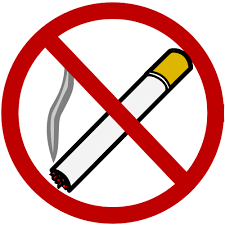Today's post is about the instructions to be followed after tooth extractions.
So, dear and faithful readers of the blog,you had a tooth extraction.This might be due to many reasons,that have been covered in the posts about extractions and surgical extractions.The tooth of the photograph below had to be extracted, due to mobility as a result of periodontal disease(periodontitis).

The post today is not why the tooth had to be extracted.It simply had do.It happened. The question is what are the guidelines after the tooth extraction.
After tooth extractions we do the following

Cigarette smoking causes a disfuction in the healing process and lengthens the time it takes for the gums to heal. Also the puffing action of the smoiking itself and the increase of the temperature in the mouth doesn't help at all.There have been reported cases where the gums do not heal at all after a few days, as it should happen under normal cisrumstance, and there is a continuous ache in the part of the mouth that the extract was done.This phenomenon is called "dry socket" and it is one of the situations that can happen after a tooth extraction. Under normal circumstances eg patient middle aged non smoker gums heal in 10-20 days.If sutures are done,they are usually removed in 10 days.
- First of all ,and that goes to all of the smokers out there, do not smoke;especially for 5-12 hours after the extraction.And the less you smoke during the healing process,the better it will be.Now,I know in advance that the smokers would look at me as if I were an alien! But there is a very good reason for my advice!
Cigarette smoking causes a disfuction in the healing process and lengthens the time it takes for the gums to heal. Also the puffing action of the smoiking itself and the increase of the temperature in the mouth doesn't help at all.There have been reported cases where the gums do not heal at all after a few days, as it should happen under normal cisrumstance, and there is a continuous ache in the part of the mouth that the extract was done.This phenomenon is called "dry socket" and it is one of the situations that can happen after a tooth extraction. Under normal circumstances eg patient middle aged non smoker gums heal in 10-20 days.If sutures are done,they are usually removed in 10 days.
- Avoid spitting blood. The increase in pressure prevents clot formation and subsequent healing of the wound tooth extraction site.
- Eat semi-liquid or liquid food.Avoid hard foods.
- Eat cold or semi-warm food.Avoid hot foods ie soups.
- If pain starts to kick in,take some pain-killers(analgesic) or anti-inflammatory drugs, always in consultation with our dentist. Do not take aspirin, because it causes a problem in the healing of the trauma(prevents clot formation) at the extraction site.Take paracetamol or an anti-inflammatory drug
- If the tooth extraction was difficult we can put a cold patch at the external part of the mouth to the afflicted region ie ice to prevent the swelling.Under normal circumstances swelling of the region after extraction, might happen but is very small. If you have had a surgical extraction, which ment that a little bit of bone had to be removed,then the swelling is more likely to occur.
- Many patients ask about the use of antibiotics after tooth extractions. If the patient is a high risk one,medically speaking ie certain heart conditions or diabetes or other diseases, there is no need for antibiotics before the extraction. If there is a health problem, the dentist always prescribes antibiotics in consultation with the patient's attending physician(medical doctor) .
- Is it possible to extract the tooth and then when the numbness starts to wear off,the patient might have a bit of a fever.This could be due to the fact
that the extract was a little more difficult than anticipated or there was an inflammation, so the body raizes its' temerature in order to eliminate remaining microbial population.There is no need to start on antibiotics quite yet.We can take a simple anti-inflammatory drug, but definitely
consult with the doctor first.The fever usually passes the next day.
- Finally, many people ask me about the pain during or after detal extraction. I tell my patients that the anticipation of pain is worse than the pain itself. If you have it in your mind that the procedure will hurt, then it will. I'm not asking you to be relaxed and smile,because afeter all,your tooth is about to be extracted.But the extraction itself will not hurt almost at all, because you will be under local anesthesia.After the numbness goes away it might or might not hurt.Everyone has a different threshold of pain ;so something that I find painful, might be aknowledged as simply annoying by you,the fans and fearless readers of the blog!


